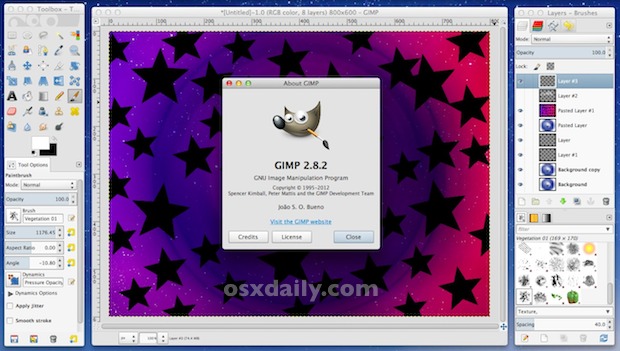

Also, the color scheme is available to a number of other programs. I am a bit indifferent to the specific colors, but the scheme overall works really well and gives me two consistent and easy to apply colors schemes, one light color scheme and one dark color scheme.
#MAC UPDATE XQUARTZ SOFTWARE#
After years of fighting with terminal color schemes, I have settled on a scheme created and used by many software engineers: Solarized. Right now, my dotfiles only supports a bash environment, but a quick Google search will find other versions for csh, zsh, and other shells.
#MAC UPDATE XQUARTZ MAC OS#
The code is “smart enough” to setup environments for different flavors of Unix (Linux or Mac OS X). By hosting the code on GitHub, I can clone and setup this system on any Unix based machine that I work on. The setup script is smart enough to back up my existing dotfiles into a ~/dotfiles_old/ directory thus giving me a means of reversing any changes. The makesymlinks.sh setup script creates symlinks of the dotfiles from the home directory to the files in ~/dotfiles/. The repository is cloned into the home directory of any of my machines such that the path is ~/dotfiles/. The code in my repository organizes my various dotfiles, including. I built on his script and setup to create my own dotfiles system. This method is based on Michael Smalley’s dotfiles setup. To manage my environments across multiple computers, both Mac and Linux, I have created a ‘dotfiles’ system using a simple script and GitHub. Ideally, this means using a bash shell with a custom prompt, colored ls output, and all of my standard aliases in place. I like to have the Unix environment set up the same on all of the machines. I use a number of machines at work and home, with a roughly 50/50 split between Macs and Linux machines. In the spirit of paying things forward, I am providing this description of my setup 2 in case it might be useful to another scientist out there facing the same problems that I already faced. Over time I strung together disparate instructions and suggestions that resulted in a working system for me. Fortunately, a number of people posted their own experiences in setting up their own systems 1. Not being a computer scientist, I was intimidated at first. Instead, you are often in the realm of package managers, compiling your own code, and customizing the paths and configurations.
#MAC UPDATE XQUARTZ MAC OS X#
Once you dive into the Unix engine under the hood, you are no longer working with Mac OS X software installers. The rest of the additional steps are there just to make my life easier. Most of these additional steps involve installing and configuring software for writing my modeling and analysis code. Since I am using the Unix underpinnings of Mac OS X, my setup requires a number of steps that the average Mac owner does not need in order to be productive. I have a toolbox and I put the tools in for the job. For me, a computer OS is just another tool, like Fortran, Python, a spectrometer, or a soldering iron. CAD design on Solidworks or mapping on ArcGIS.

I am not a fanatic follower of Apple and I will use Windows machines when the task demands it, e.g. I use a Mac computer for most of my climate research, since the Mac OS X operating system provides me computational foundation I need to develop and run planetary climate models. Updated Thanks to for useful comments and corrections. Surface wind vectors from a simulation of the ancient Martian climate.


 0 kommentar(er)
0 kommentar(er)
